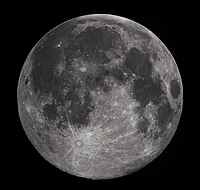
Photo from wikipedia
Landsat images have played an important role in the field of Earth observation and geoinformatics. However, optical Landsat images are frequently contaminated by cloud cover, especially in tropical and subtropical… Click to show full abstract
Landsat images have played an important role in the field of Earth observation and geoinformatics. However, optical Landsat images are frequently contaminated by cloud cover, especially in tropical and subtropical regions, which limits the utilization of these images. To improve the utilization of Landsat images, in this study, we propose a novel spatiotemporal neural network with four modules: a cloud detection module, a spatial-temporal learning module, a spatial-temporal feature fusion module, and a reconstruction module. The results of the experiments demonstrate that the proposed method is quantitatively effective (root mean square error < 0.0179) and can achieve a better result for reconstructing Landsat images than some of the widely used existing deep learning methods and multitemporal methods. The proposed neural network method provides an effective tool for the removal of contiguous, thick clouds from satellite images, so as to improve the quality of subsequent remote sensing mapping and geoinformation extraction.
Journal Title: IEEE Transactions on Geoscience and Remote Sensing
Year Published: 2020
Link to full text (if available)
Share on Social Media: Sign Up to like & get
recommendations!